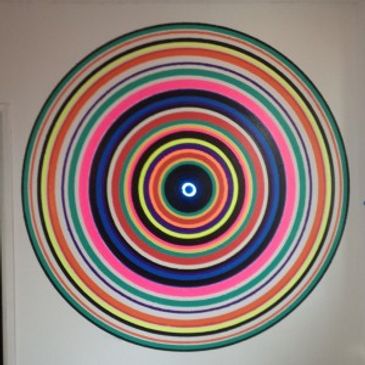elevating theory to practice
Neon

Neon has always drawn me in, like a moth to Vegas. Those glowing handmade letters and colorful glass creations have fascinated me for as long as I can remember. So, when I found myself in Mumbai, India, it seemed like fate was finally setting the stage for my neon adventure.
One day, while wandering through Mumbai’s chaotic streets, my sen
Neon has always drawn me in, like a moth to Vegas. Those glowing handmade letters and colorful glass creations have fascinated me for as long as I can remember. So, when I found myself in Mumbai, India, it seemed like fate was finally setting the stage for my neon adventure.
One day, while wandering through Mumbai’s chaotic streets, my senses were on overdrive from the riot of sights and sounds. Rounding a corner, I spotted an old neon teacup sign precariously perched on an overflowing trashcan like a sparkly crown. Naturally, I felt compelled to save this gem from an untimely demise. I carefully wrapped it in whatever I could find (a couple of old newspapers and a dubious scarf) and shipped it back to the States. This was the start of my glowing journey with neon.
At the same time, I had just started working on my Ostensibly Colored Monochromatic Screen series, which sounds fancy but was really just a bunch of experiments with signs and movie screens. The neon teacup was another piece in the puzzle of my new series. With a background in photography and a love for playing with light in the darkroom, neon became the new darling of my creative endeavors, clearly, I have a bit of a light fetish.
As a long-time disciple (okay, creeper) of James Turrell, I’ve always been captivated by his soft, solid light shows. But unlike Turrell’s serene displays, I wanted to capture movement. Neon’s ethereal, constantly shifting colors offered exactly that. Not that it didn't come with its share of hazards—fragile glass, unpredictable pops, burns, and potential shocks. It’s like neon wants you to earn the right to use it by playing a high-stakes game of "Operation." Fortunately, when I finally got a studio big enough to handle the drama, I dove headfirst into neon, extending my body of work to include these unpredictable pieces.
My neon obsession ties into a recurring theme in my work, which I call: The Cowboy System and The Indian System. The Cowboy System represents our consumer culture with its "sky's-the-limit" mentality, think rampant Black Friday shoppers. The Indian System, on the other hand, is all about sustainable living and a connection to nature, like a soul-soothing yoga retreat (minus the Instagram influencers). These themes raise the existential question: Can humanity survive its addiction to consumer culture, this flat, homogenizing force that turns everything into one generic commercial soup? How do you even portray that?
In my attempt to dig deeper, I wondered which recent technology might have pushed us into this hyper-commercialized state. Illuminated epiphany: could it be neon? I suggest that neon mirrors our technological binge, contributing to what I call a hyper flat culture. All in all, my adventure with neon started with a trashy teacup in Mumbai and snowballed into a luminous journey of color, light, and existential contemplation.


Studio: 808.888.8888
This website uses cookies.
We use cookies to analyze website traffic and optimize your website experience. By accepting our use of cookies, your data will be aggregated with all other user data.